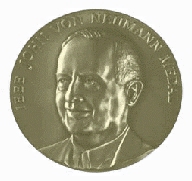
The IEEE
2002 John von Neumann Medal
On 19 November 2001 I got a letter from the IEEE President, Joel B. Snyder, telling me that:
"...the IEEE Board of Directors has named you co-recipient of the 2002 IEEE John von Neumann Medal, along with Ole-Johan Dahl with the following citation: "For the introduction of the concepts underlying object-oriented program-ming through the design and implementation of SIMULA 67."
The ACM 2001 Turing Award
Then, on 4 January 2002, I got a telephone from Professor Stephen A. Cook in Toronto, informing me that Ole-Johan and I had received the ACM Turing Award.
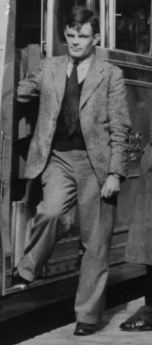 From
the ACM Press Release:
From
the ACM Press Release:
"COMPUTING'S HIGHEST HONOR AWARDED TO INVENTORS OF DOMINANT PROGRAMMING
STYLE
"New
York, February 5, 2002...The Association for Computing Machinery (ACM)
has presented the 2001 A.M. Turing Award, considered the "Nobel
Prize of Computing," to Ole-Johan Dahl and Kristen Nygaard of Norway
for their role in the invention of object-oriented programming, the
most widely used programming model today. Their work has led to a fundamental
change in how software systems are designed and programmed, resulting
in reusable, reliable, scalable applications that have streamlined the
process of writing software code and facilitated software programming."
The citation is:
"For ideas fundamental to the emergence of object oriented programming,
through their design of the programming languages Simula I and Simula
67."
As you will understand, Ole-Johan and I feel very honoured by receiving these awards.
The COOL Project (Comprehensive Object-Oriented Learning) is a 3-year research project proposal launched by by a consortium of four Norwegian research institutions, supported by research institutions in Aarhus in Denmark, and co-operating with test sites around the world.
COOL
will contribute to a unifying process- and object-oriented platform for
informatics, and produce a "Learning Landscape" of pedagogical
and organisational components to be used in a modern and system-oriented
education in informatics and related fields. It will provide an alternative
to the current pedagogical approach used, commonly regarded as unsuccessful.
COOL will co-operate with research institutions in Denmark and with a
number of test sites (universities and colleges) around the world, representing
a number of language/cultural worlds (Spanish/South American, English/North
American, Scandinavian, and perhaps others). COOL will produce an introductory
course, supported by a textbook and DVD records containing integrated
multimedia material. The COOL Learning Landscape shall allow for alternative
courses, adapted to local cultures and conditions.
The consortium partners in Norway are the new InterMedia center, the new
Simula Research Laboratory, the Department of Informatics, all at the
University of Oslo, and the Norwegian Computing Center, headed by InterMedia.

"Object-Oriented
Reasoning and Working Style"
![]() "Object-Oriented
Reasoning and Working Style" is a one-day tutorial given by Kristen
Nygaard. Kristen Nygaard is the inventor of object-oriented programming
together with Ole-Johan Dahl.
The tutorial introduces all basic concepts in object-orientation, first
through examples well known to everyone, then through discussion of precise
definitions. It is not a programming language course. The purpose is to
introduce people to reasoning, analysing and designing in a truly object-oriented
way. This is necessary in order to get the benefits from this style of
system development. With the traditional pedagogical approach used in
teaching object-oriented programming, most students continue to think
and program in the traditional, calculation/algorithm-oriented way, even
if they are using a new, object-oriented language.
"Object-Oriented
Reasoning and Working Style" is a one-day tutorial given by Kristen
Nygaard. Kristen Nygaard is the inventor of object-oriented programming
together with Ole-Johan Dahl.
The tutorial introduces all basic concepts in object-orientation, first
through examples well known to everyone, then through discussion of precise
definitions. It is not a programming language course. The purpose is to
introduce people to reasoning, analysing and designing in a truly object-oriented
way. This is necessary in order to get the benefits from this style of
system development. With the traditional pedagogical approach used in
teaching object-oriented programming, most students continue to think
and program in the traditional, calculation/algorithm-oriented way, even
if they are using a new, object-oriented language.
Companies and institutions interested may contact me at kristen@simula.no
- Early Activities
- The Norwegian Defense Research Establishment (1948 - 1960)
- The Norwegian Computing Center (1960 - 1984)
- Object-Oriented System Description and Programming Languages - SIMULA I (1961 - 1965)
- Object-Oriented System Description and Programming Languages - SIMULA 67
- Trade Union Activities (1967- 1988)
- The DELTA System Description Language (1973 - 1980)
- The Department of Informatics, University of Oslo (1974 - )
- The
Department of Computer Science, University of Aarhus
(1974 - ) - System Development Research (1974 - )
- The BETA System Description and Programming Language (1975 - 1986)
- The Norwegian Computing Center (1997- )
- The GOODS and STAGE Projects (1996 - )
- On
Informatics and Research (1970 -)
My grandfather
Kristen Nygaard was an industrial lawyer. He and I agreed that I should
study law and become his partner. To the left find a photo of us during
an early business conference.
I never studied law.
On
20 February 1948 I arrived, as a soldier 21 years old, at the Norwegian
Defense Research Establishment (NDRE) at Kjeller outside Oslo. I was received
by my new boss Jan V. Garwick and I was (as I can see in retrospect) catapulted
into a career in informatics What had happened that caused this ? Early
Activities
 My
first task at the NDRE was to carry out the calculations of the dimensioning
of the uranium rods in the atomic reactor at Kjeller, the first
civilian reactor in Europe. We had heavy water and bartered enriched uranium.
But the Americans were not eager to assist us with information. Garwick
had developed a numerical method (very time-consuming) based upon the
solution of a Fredholm integral equation. I continued working at the NDRE,
and was made the leader of the "Computing Office". Later we
switched to stochastic ("Monte Carlo") simulation, carried
out by 6-7 assistants using electromechanical calculators. From 1954 on
I became responsible for building the use of Operational Research (OR)
in the Norwegian Defense. That brought me once more in contact with large
simulation studies. It also brought me in conflict with the Director of
the NDRE .Norwegian Defense Research Establishment
(NDRE)
My
first task at the NDRE was to carry out the calculations of the dimensioning
of the uranium rods in the atomic reactor at Kjeller, the first
civilian reactor in Europe. We had heavy water and bartered enriched uranium.
But the Americans were not eager to assist us with information. Garwick
had developed a numerical method (very time-consuming) based upon the
solution of a Fredholm integral equation. I continued working at the NDRE,
and was made the leader of the "Computing Office". Later we
switched to stochastic ("Monte Carlo") simulation, carried
out by 6-7 assistants using electromechanical calculators. From 1954 on
I became responsible for building the use of Operational Research (OR)
in the Norwegian Defense. That brought me once more in contact with large
simulation studies. It also brought me in conflict with the Director of
the NDRE .Norwegian Defense Research Establishment
(NDRE)
In
May 1960 I moved with most of the people in the groups I had built in
OR from the NDRE to the Norwegian Computing Center (NCC), causing a fairly
big bang. NCC was a collection of sundry items of computing equipment,
notably the English Electric DEUCE. DEUCE had acoustic mercury delay lines
as main memory and was
programmed in Chinese (backward) binary!
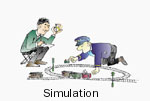 The task given to me was to build up the NCC professionally to a first
class applied research institute
in informatics, operations research, applied mathematics and statistics.
At the NCC I immediately had to use simulation in a number of jobs. My
earlier vague plans for the creation of a language for description and
simulation programming of complex systems became more focussed, and Ole-Johan
Dahl started working with me.. The American company UNIVAC got interested.
We got their newest computer, the famous UNIVAC 1107, at half price. They
got SIMULA, as the new language was called.
The task given to me was to build up the NCC professionally to a first
class applied research institute
in informatics, operations research, applied mathematics and statistics.
At the NCC I immediately had to use simulation in a number of jobs. My
earlier vague plans for the creation of a language for description and
simulation programming of complex systems became more focussed, and Ole-Johan
Dahl started working with me.. The American company UNIVAC got interested.
We got their newest computer, the famous UNIVAC 1107, at half price. They
got SIMULA, as the new language was called.
Many other things happened at the NCC, The institute became a key actor
in the development of information technology in Norway, with a history
that was rather dramatic at times.
A very brief description of the history of the SIMULA languages is found in the page on " How Object-Oriented Programming Began" . A more comprehensive one is in the SIMULA article in the book "History of Programming Languages". The article is OCR-ed and will appear soon on the site.
SIMULA I was an immediate success as a simulation language, being used by the powerful companies and institutions that had the necessary resources in money, qualified staff and computing equipment. The analyses supported by SIMULA simulations often resulted in changes in organisation that impacted strongly upon the employees working conditions, their use of their own professional skills and the strength of their trade unions.
Since my own sympathy was with the employees and their trade unions, I had to consider what I should do in this situation. I approached the trade unions and a groundbreaking project started: The "Iron and Metal Workers Project" spearheaded a series of research projects for the trade unions. The Norwegian "data and technology agreements" were important results of this development. (In the "Iron and Metal Project", Olav Terje Bergo was the other scientist in the team.)
The SIMULA languages were extensively used for system description also in situations in which no simulation runs were made. Since SIMULA was designed as compilable and executable programming languages, it was not possible to describe continuous changes of state as well as interrupts and states determined by mathematical and other relations. The DELTA system description language addressed these tasks.(The other scientists in the team were Petter Haandlykken and Erik Holbæk-Hanssen.) Today the language seems to be a useful platform for description of many aspects of the interactions between human actors and computing equipment. (See the GOODS and STAGE projects below.)
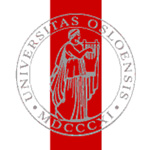 My
work at the NCC became more and more oriented towards research that could
not be financed as applied research for customers, even if the projects
were very practical in nature. Also, the new data agreements made it necessary
to build up a curriculum in systems development, taking the new situation
into account. I started the first course on "Computers and Society"
at the University of Oslo in 1974. I became part-time professor 1977 and
full-time professor in 1984. A main task became the building up of research
and education in system development. (See below.)
My
work at the NCC became more and more oriented towards research that could
not be financed as applied research for customers, even if the projects
were very practical in nature. Also, the new data agreements made it necessary
to build up a curriculum in systems development, taking the new situation
into account. I started the first course on "Computers and Society"
at the University of Oslo in 1974. I became part-time professor 1977 and
full-time professor in 1984. A main task became the building up of research
and education in system development. (See below.)
I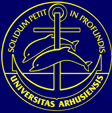 In April 1973 Olav Terje Bergo and I were invited to present the results
of the "Iron and Metal Project" at the Institute of Psychology
at Aarhus University, Denmark. A young student followed what I said very
carefully. Afterwards he came up to me and said that we had come to the
wrong institute. Among the students studying informatics very many of
the most active students would regard our findings as extremely relevant
to their studies. The student, Morten
Kyng, then took control, brought me in close cooperation with a large
group of very bright and competent students in Aarhus and in Copenhagen,
I became adjoint lecturer and for a year full time guest professor in
Aarhus, and my contacts with Aarhus and other Danish universities are
still very close.
In April 1973 Olav Terje Bergo and I were invited to present the results
of the "Iron and Metal Project" at the Institute of Psychology
at Aarhus University, Denmark. A young student followed what I said very
carefully. Afterwards he came up to me and said that we had come to the
wrong institute. Among the students studying informatics very many of
the most active students would regard our findings as extremely relevant
to their studies. The student, Morten
Kyng, then took control, brought me in close cooperation with a large
group of very bright and competent students in Aarhus and in Copenhagen,
I became adjoint lecturer and for a year full time guest professor in
Aarhus, and my contacts with Aarhus and other Danish universities are
still very close.
This cooperation initiated my building up of a curriculum in System Development in Aarhus and Oslo, in cooperation between trade unions and researchers also in Denmark, and it triggered off the BETA language project.
The trade union-related project showed us that the properties of an information system did not only depend upon the specifications stated but also on the characteristics of the actual implementation process. Thus, the system development processes must be studied as important elements in the class of the phenomena belonging to the domain of informatics.
From 1974 on research in system development became a major part of my work. Associated with this effort was the building up of teaching and research groups in Oslo and Aarhus. The work of these and co-operating groups is often referred to as the "Scandinavian School" in system development. A summing up of this work is found in
"Program Development As a Social Activity"
Invited Lecture at IFIP '86, the World Congress of the International Federation of Information Processing Societies, Dublin 1986
While I was professor in Aarhus, a new basic research project in object-oriented language design was started together with Bent Bruun Kristensen, Ole Lehrmann Madsen (and later also Birger Møller-Pedersen). This, and follow-up efforts have been other major components of my work since. The name of the language is BETA for complex historical, but not necessarily good reasons. The language is very powerful and built upon a few very general concepts. It is implemented on a series of computers.

I
left the Norwegian Computing Center in 1984, but continued to
keep close contact with the institute. When the GOODS Project (see
below) started giving
 interesting
results,
NCC decided it wanted to participate in the further development and play
a major part in the implementation of the ideas. Since I (according to
the formal definition) am retired but still as active as before, I now
have
a nice office in the Informatics building, within the premises of NCC
but belonging to the Institute. Ole-Johan Dahl
joined me there for some time. NCC is also a partner in the COOL consortium
(see above).
interesting
results,
NCC decided it wanted to participate in the further development and play
a major part in the implementation of the ideas. Since I (according to
the formal definition) am retired but still as active as before, I now
have
a nice office in the Informatics building, within the premises of NCC
but belonging to the Institute. Ole-Johan Dahl
joined me there for some time. NCC is also a partner in the COOL consortium
(see above).
Lars
Holden ,
Director of the NCC
 During
the DELTA project, I started using a theatre metaphor for the description
of the relationship between the performance (program execution) and the
component(s) actively carrying out the play (program) and thus creating
the performance. Around 1980 I returned to the theatre metaphor with a
richer set of ideas. Work was done both with Dag Belsnes and
with the BETA team. When the No to EU-victory was won, I returned
immediately to full-time research. I have put much effort into familiarising
myself with multimedia and distributed and layered computing architectures.
I soon realised that the theatre metaphor now was immediately applicable.
I got support from the Norwegian Research Council for a new project: General
Object-Oriented Distributed systems (GOODS) and a team was assembled.
The ideas for GOODS were presented at the
1997 ECOOP conference.
During
the DELTA project, I started using a theatre metaphor for the description
of the relationship between the performance (program execution) and the
component(s) actively carrying out the play (program) and thus creating
the performance. Around 1980 I returned to the theatre metaphor with a
richer set of ideas. Work was done both with Dag Belsnes and
with the BETA team. When the No to EU-victory was won, I returned
immediately to full-time research. I have put much effort into familiarising
myself with multimedia and distributed and layered computing architectures.
I soon realised that the theatre metaphor now was immediately applicable.
I got support from the Norwegian Research Council for a new project: General
Object-Oriented Distributed systems (GOODS) and a team was assembled.
The ideas for GOODS were presented at the
1997 ECOOP conference.
Later the NCC joined the project through their STAGing Environment (STAGE) project. The results of the STAGE project are described in:
Belsnes, D., Nygaard,K., Skretting, J. and Østerbye, K., 1998: "Staging Environments. Technical Annex to the Contract for the STAGE Project. Version 1.0". 57 pages.Norsk Regnesentral (Norwegian Computing Center), Oslo, November 1998.
In many sciences, a platform of "core knowledge" is established, outlining its domain, key concepts and relating its subfields to each other. This is yet not the case in informatics. Even the name of the science is not universally agreed upon, and the terms "computer science" and "informatics" are not necessarily synonyms.
In recent years I have been working on defining a platform for such an effort, based upon the basic concept of an "information process".
I have a long and varied experience in producing research, mainly in teams, and in being tutor for Master's and Ph.D. degree students as well as teacher. My work has often been controversial when it was carried out, and I have had to handle many conflicts. Some of my experience is given in
Advice to Young Researchers in Informatics (IRIS keynote 1996).


basic
research in the computing sciences
On January
1st, this new Norwegian research center in informatics will be formally
established as an institute ownedby six owners: University of Oslo (25%),
Norwegian University of Science and Technology in Trondheim (25%), University
of Bergen (15%), University of Tromsø (15%), Norwegain Computing
Centre (10%) and SINTEF (10%). Simula Research Laboratory has a 10 year
funding contract with the Research Council of Norway, and we will be located
within a new Information Technology Park, which is under construction
at the old Oslo airport - Fornebu.
Three groups will be active from the start of SRL, working in software engineering, scientific computing and communication technology. SRL is a member of the COOL consortium, and I will have an office there, also serving as a kind of revered weather-beaten figurehead. (This implies that I at the age of 75 have more offices than ever before in my life. Is this a sign of useful activity or of lack of concentration?)
Morten Daehlen, the SRL Director (photo above) states the task of the SRL this way:
"Information and communication technology (ICT) will be one of the key factors in the 21st century - it will transform the way we live, learn, work and entertain ourselves. Advances in computing and communication technologies create new infrastructures for business, scientific research, social interaction and public services (such as practice of health care). The rapidly expanding digital infrastructure will provide us with new tools for world-wide communication, and information will be available wherever we are and whenever we want. ICT will help us understand the world we live in - the natural environment and the secrets of the human body. Within this picture Simula Research Laboratory will perform basic research and device innovative solutions within selected areas of computer science".
This
page ...
...
is the main page for the research part of my site. In this column you
will find a listing of my main activities in professional work. Each activity
is represented by an "Activity bar" (like "EARLY ACTIVITIES"
etc.) CLICKING A BAR WILL BRING YOU TO THE START-ING
PAGE OF THE CORRESPONDING ACTIVITY (thread) of research. Some activities
were rather short-lived, other have been continuing through most of my
work since the beginning of the 1960s.
Events
in one activity may trigger off another (in research or in politics),
and activities may interact also in many other ways, e.g. by competing
for time resources. They may of course also usefully be presented as containing
subactivities. (This object-oriented organisation seems to be very useful
for presenting a complex set of activities throughout a long research
and political life.)
Contents
- Just Now
- The COOL Project
- Lectures and Tutorials
- Early Activities
- The Norwegian Defense Research Establishment (1948 - 1960)
- The Norwegian Computing Center (1960 - 1984)
- Object-Oriented System Description and Programming Languages - SIMULA I (1961 - 1965)
- Object-Oriented System Description and Programming Languages - SIMULA 67
- Trade Union Activities (1967- 1988)
- The DELTA System Description Language (1973 - 1980)
- The Department of Informatics, University of Oslo (1974 - )
- The
Department of Computer Science, University of Aarhus
(1974 - ) - System Development Research (1974 - )
- The BETA System Description and Programming Language (1975 - 1986)
- The Norwegian Computing Center (1997- )
- The GOODS and STAGE Projects (1996 - )
- On Informatics and Research (1970 -)
- Simula
Research Laboratory
Selected References

